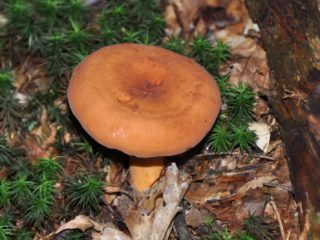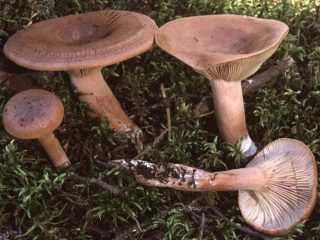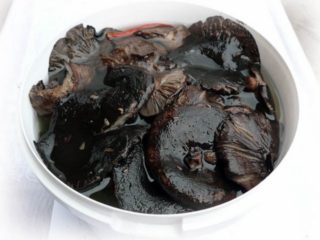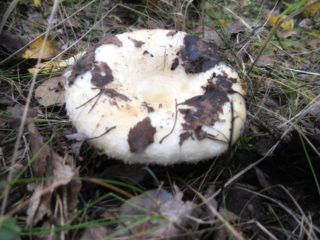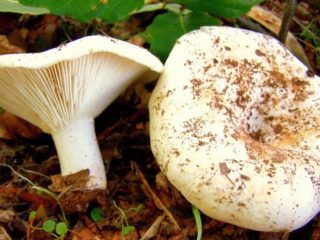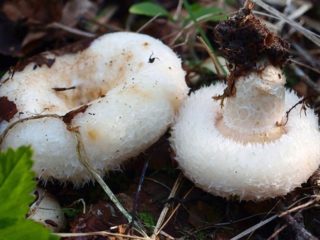Content
- 1 What does a white breast look like?
- 2 Is the white milk mushroom edible or not?
- 3 Types of milk mushrooms and their differences from white ones
- 4 Are there poisonous counterparts of real milk mushrooms?
- 5 Where do white milk mushrooms grow?
- 6 How the white milk mushroom grows
- 7 When do white milk mushrooms grow?
- 8 When and how are white milk mushrooms collected?
- 9 Conclusion
From time immemorial, the white milk mushroom in Rus' has been valued much higher than other mushrooms - even the genuine boletus, also known as the porcini mushroom, was inferior to it in popularity.A completely opposite situation has developed in Europe, where this species is still considered inedible and is never collected. The reason for this is the strong bitterness of the fruiting bodies, however, after careful soaking, the taste of the pulp changes dramatically. After such processing, the harvested crop can be used for pickling and preparing other dishes.
You can learn about what the white milk mushroom and its numerous counterparts look like from the description with the photo below.
What does a white breast look like?
Real milk mushroom (lat. Lactarius resimus) or white is a conditionally edible mushroom of the Russulaceae family (lat. Russulaceae). Other names for this species are also common in Russia: in Western Siberia it is wet milk mushroom, in the Urals and in the Volga region it is raw, in Kazakhstan it is pravsky. The word milk mushroom, in turn, reflects the peculiarity of the growth of the fruiting bodies of this mushroom - it is almost never found alone. Usually entire groups of milk mushrooms are found, which in the old days were called “gruda”, “milk mushrooms”.
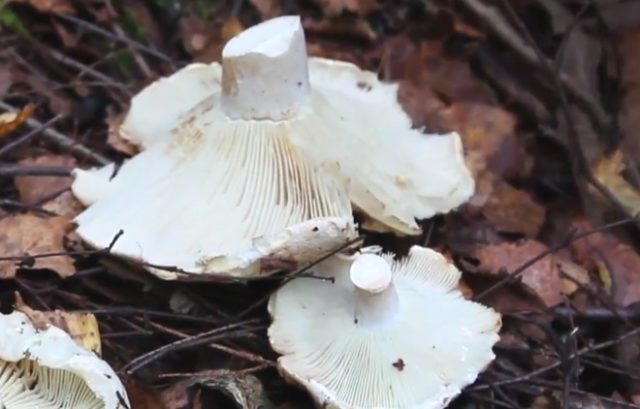
The color of the fruiting bodies is uniform without spots or streaks
Description of the cap
The cap of a raw milk mushroom at the first stage of development is flat-convex, however, then it opens up and takes the form of a funnel, the edges of which are lowered inward, as can be seen in the photo below. The diameter of the cap in mature specimens can reach 18-20 cm. Its surface is smooth, slightly damp to the touch. The color is milky white, sometimes mixed with yellowish tints. Very often, fruiting bodies are covered with small particles of soil and litter.
The pulp of ripe mushrooms is quite dense, but not too hard. It is absolutely white without any transitions. The fruiting bodies of milk mushrooms are distinguished from similar varieties by a pleasant fruity aroma.
The plates of the hymenophore are often located; in their structure they are quite wide, descending to the stalk. The color of the plates is pale yellow. The spore powder is also yellowish in color.
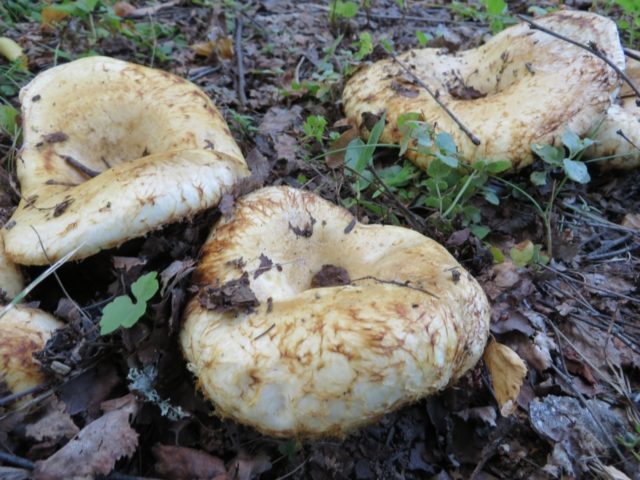
Small debris often accumulates in the recess on the cap
Description of the leg
The description of the raw milk mushroom indicates that its stem is low and cylindrical, as can be seen in the photo below. It can reach 7-8 cm in height and 3-5 cm in width. The surface of the leg is smooth to the touch, the color is white, sometimes yellow. It also happens that it becomes covered with ocher-colored stains and stains.
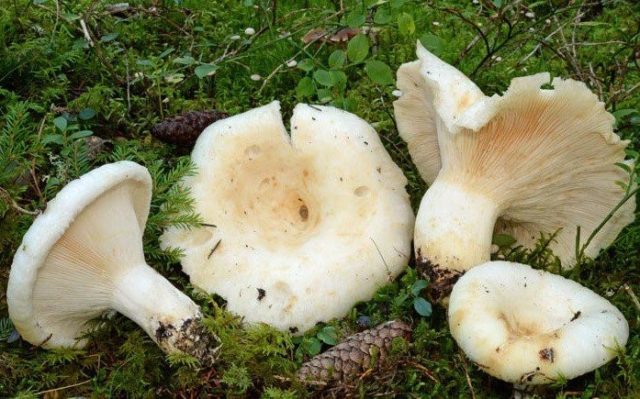
In older specimens, the leg often becomes hollow and the hymenophore darkens
Is the white milk mushroom edible or not?
Abroad, the species is considered inedible due to its strong bitterness, however, in Russia it has always been among the most popular, used for pickling. However, it cannot be consumed raw - the fruiting bodies must be soaked for two to five days to remove the burning aftertaste. Thus, in Russia, white milk mushroom is classified as a conditionally edible mushroom.
How to prepare white milk mushrooms
The harvested crop can be used for all types of heat treatment: boiling, frying, baking, etc., but before that the fruiting bodies are soaked and salted. Only the salted pulp is suitable for preparing other dishes. Marinating wet breasts is also very popular in Russia.
Types of milk mushrooms and their differences from white ones
In order to be sure to distinguish a real raw milk mushroom from similar mushrooms, it is not enough just to study photos of the lookalikes - you also need to read their brief description. This is the only way to not be afraid of making a mistake in your choice. Although there are no poisonous false species, similar varieties may have completely different processing requirements. In case of an error, incorrectly prepared pulp of fruiting bodies may turn out to be too heavy food for the body.
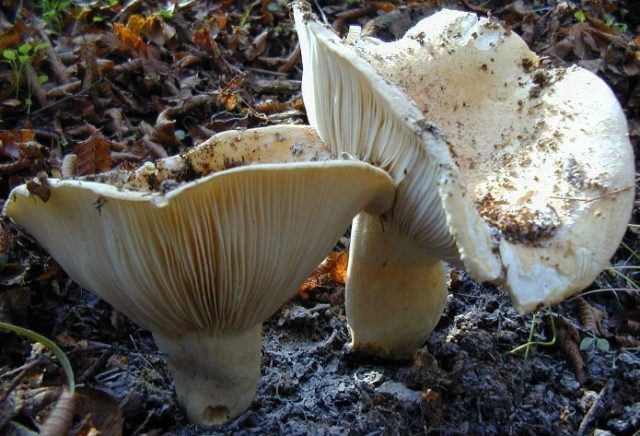
You can tell the difference by the dry cap - a real milk mushroom has a sticky cap.
Violin
The violin or felt milk mushroom, also the violin (lat. Lactarius vellereus) is a conditionally edible mushroom with a fleshy cap, which in young specimens is bent towards the ground. In adult fruiting bodies, its edges are wavy and spreading. The diameter can reach 25 cm.
A distinctive feature of the double is the white fibers on the surface of the cap, which resemble fluff. The hymenophore of this variety is represented by rare plates. The pulp at the cut site quickly darkens, acquiring a greenish tint. The milky sap turns slightly pink when exposed to air.
The species' distribution range includes both deciduous and coniferous forests. Most often you can find it under aspen and birch trees.
Important! It is quite difficult to understand how to distinguish this type of white milk mushroom only from a photo. It is recommended to lightly rub the cap with your fingernail during collection.
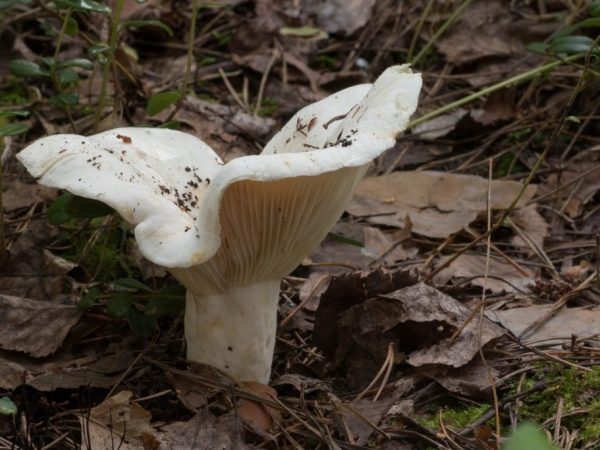
Skripun is distinguished by the characteristic creaking of the fruiting body
Pepper milk mushroom
Pepper milkweed (lat. Lactarius piperatus) is another common species that is not poisonous.This is a conditionally edible mushroom with a velvety skin to the touch. His cap is white or slightly cream in color, darker in the center.
The distribution area of the twin covers deciduous and mixed forests. It is extremely rare to find this false species in a coniferous forest.

In young fruiting bodies, the edges of the cap are bent; as they grow, they straighten out
Aspen milk mushroom
Aspen milk mushroom (lat. Lactarius controversus) is a mushroom that belongs to the category of conditionally edible. It can be easily distinguished from similar varieties by its fleshy cap, which is covered with thick fluff. In young specimens it is tucked in, in adults it is straightened.
The leg of the double is low and dense, narrowed at the base, mealy at the top. The main distinguishing feature is the pinkish tint of the hymenophore and the formation of mycorrhiza with poplar or willow.
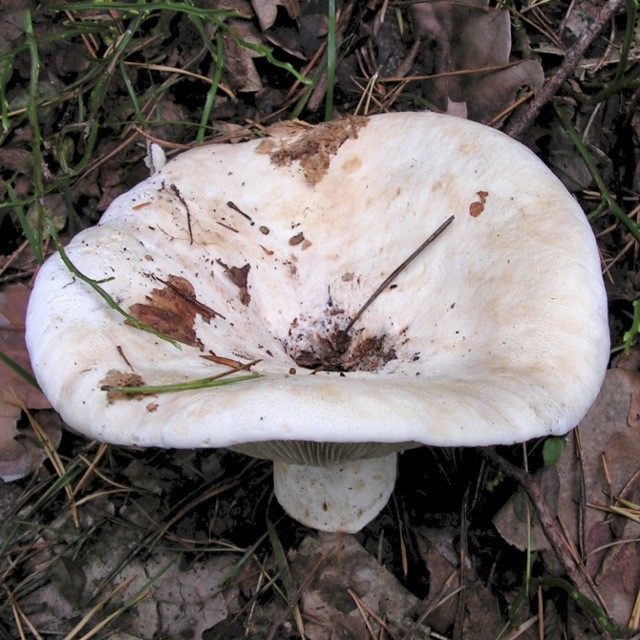
The barely perceptible fluff on the cap gives away the double
Volnushka white
White volnushka (lat. Lactarius pubescens) is one of the smallest twins. The diameter of its cap is in most cases only 8 cm. A distinctive feature of the species is the abundant secretion of milky juice, which does not change its color when in contact with air.
The main difference from similar varieties is that the cap of the fruiting body is covered with thick fluff.
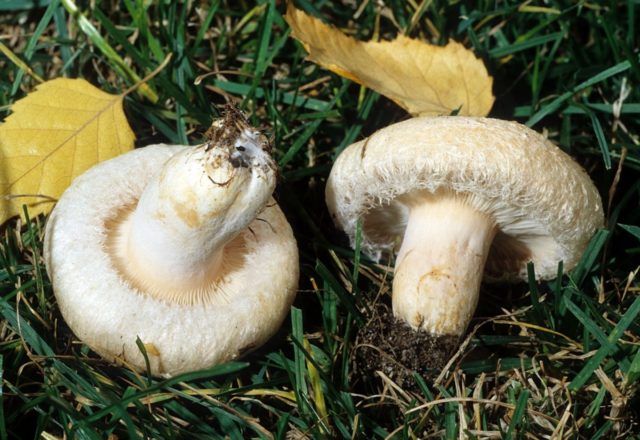
Volnushka prefers deciduous forests
Parchment milk mushroom
Parchment milkweed (lat. Lactarius pergamenus) is a false double of the conditionally edible species. It is distinguished by the wrinkled surface of the cap, which becomes yellow in older specimens. The hymenophore plates of this false species are frequent and yellow-white in color. Unlike other related varieties, this lookalike has a rather long and slender stalk, which can reach 12 cm in height.
Parchment milkweed grows in deciduous and mixed forests.

The color of this subspecies is cream, darker
Camphor milk mushroom
Camphor milk mushroom (lat. Lactarius camphoratus) is an edible mushroom. In young fruiting bodies the cap is convex, however, as it grows it becomes prostrate with a tubercle in the middle and slightly wavy edges. Its color in mature mushrooms varies from dark red to light brown.
Another distinctive feature is the loose pulp with the specific smell of camphor.

This false species is much darker in color and its stem is more elongated.
Are there poisonous counterparts of real milk mushrooms?
Despite the fact that white milk mushrooms are very easy to confuse with many other mushrooms, there are no poisonous varieties among the false doubles. On the other hand, most false species are classified as conditionally edible - those that in no case should be eaten without heat treatment or soaking.
In order to remove the burning taste of bitterness from the pulp of the fruiting bodies, white milk mushrooms must be kept in cold water for at least a day or two. At the same time, it is important to drain it every few hours, replacing it with a new one - otherwise the mushrooms may turn sour. Only then can the harvested crop be salted or pickled. It is recommended to prepare all other dishes using already pickled mushrooms.
Where do white milk mushrooms grow?
The growing area includes the northern regions of Europe. Particularly rich harvests of mushrooms are collected in Belarus and the Volga region.In southern latitudes the probability of finding this species is extremely low.
Where do raw milk mushrooms grow in Russia?
In Russia, the mushroom is most often found in Western Siberia and the Urals; you can also harvest a good harvest in the Moscow region. You should search, first of all, on calcareous-clayey soils, but, in general, this species does not make any special demands on the composition of the soil. Another criterion by which mushroom places are determined is that milk mushrooms prefer moderately dry areas of the forest. There is no point in searching in damp and swampy areas. You should focus on moderately lit forest edges with shrubby undergrowth.
In which forest do white milk mushrooms grow?
In young woodlands, where trees are only slightly taller than a person, white milk mushrooms are practically never found. The chances of reaping a rich harvest in old deciduous and mixed forests are significantly increased. The fungus can also be found in coniferous plantings, but this happens extremely rarely.
Most often it forms mycorrhiza with birch, so large groups grow in birch groves. This species also bears fruit well in the vicinity of linden trees. In coniferous forests they look for it under pine trees.
How the white milk mushroom grows
As a rule, real milk mushrooms are harvested soon after light rains. Prolonged downpours, on the contrary, lead to rapid rotting of the fruiting bodies of this species - they disappear as quickly as they ripen.
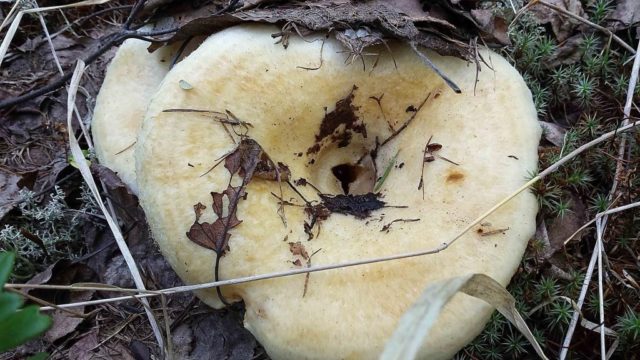
Single specimens are rare
How long does it take for a white mushroom to grow?
It is difficult to say exactly when the real milk mushrooms will appear after the rains, since not only this factor affects the growth of fruiting bodies. The type of soil, average daily temperature, illumination of the area, etc. are also of considerable importance. But if small mushrooms have already appeared, then, as a rule, they fully ripen in about a week under favorable conditions.
When do white milk mushrooms grow?
The first fruits appear in northern latitudes - in Western Siberia and the Urals, where they can be collected at the end of June. Fruiting in these regions usually ends by the end of August - beginning of September.
In central Russia, including the Moscow region, the mushroom picking season begins a little later, in July. In temperate climates, fruits can be harvested until the end of September - beginning of October. In the south of the country they also bear fruit closer to autumn.
When and how are white milk mushrooms collected?
Real milk mushrooms are quite difficult to detect, since the fruiting bodies are often hidden under the thickness of foliage, grass and small twigs. That is why people usually go about harvesting with a long stick, which is convenient for stirring up the leaves in search of mushrooms.
On the other hand, they almost always grow in large groups - single mushrooms are very rare, which makes the search much easier. If you can find at least one specimen, the basket can be filled very quickly. Immediately after discovering the mushroom, you should carefully search the adjacent area for other fruiting bodies.
They inspect the soil especially carefully if the specimen found is quite young.Small fruits can be almost completely hidden underground - their location can only be determined by small tubercles that are covered with cracks.
The best time to pick mushrooms is early in the morning, while there is still dew on the grass. Firstly, this makes the milk mushroom caps easier to notice in the grass due to the wet shine. Secondly, the harvested crop in such conditions remains fresh longer.
Conclusion
The white mushroom is highly valued in Russia, sometimes even more than the porcini mushroom. Despite the fact that in foreign sources this species is classified as inedible, it is quite suitable for consumption, but only after soaking. The pulp of ripe fruiting bodies is very bitter without additional processing.
You can learn more about how to collect raw milk mushrooms from the video below:


